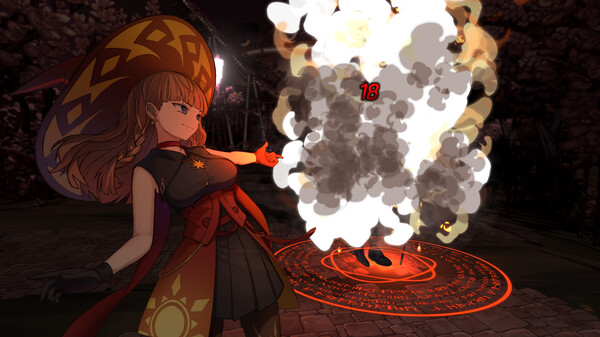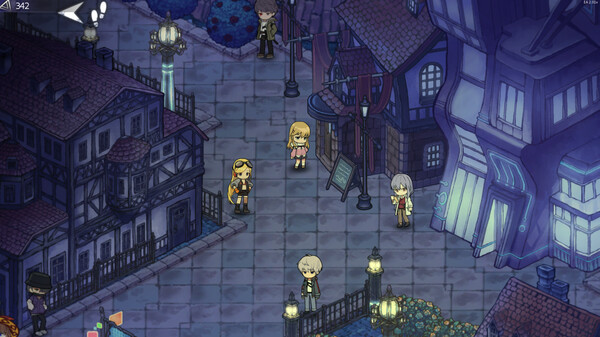Time Traveling Troubles: A Chrono Ark Review Chrono Ark is a roguelike deck builder that combines engaging and enjoyable gameplay with a fascinating story that is pieced together as you find fragments of what happened before the start of the game. Multiple characters and builds allow for a lot of creativity when it comes to determining how each of your party members will play and what kind of synergies they can take advantage of to destroy powerful foes before things get complicated. On the other hand, as a roguelike that can be missing variation in the runs that take place in it, that is to say, the areas and some challenges, it suffers from slow burnout as things can become repetitive over time. Certain characters have either complex methods for being unlocked or greedy ones, and sometimes having a bit of bad luck can send you back to the starting area in the blink of an eye. What Works: A Roguelike Where Time Is Of The Essence In Chrono Ark, battles need to be done quickly and efficiently. Characters can get hurt from storms if they spend too much time in a battle, bosses have powerful mechanics that are dangerous in a battle of attrition and even a relaxed situation can become critical due to new foes appearing or party members becoming exhausted. In this balancing act, we can see that Chrono Ark as a roguelike game can be quite challenging but also extremely fun to play as each turn you take risks and maneuver your options to try to execute the most optimal play. https://steamcommunity.com/sharedfiles/filedetails/?id=3375127834 The diverse cast of characters keeps things fresh, as each of them presents their particular playstyle, synergies, and roles. For example. Azar is a damage dealer who when using his skills, can generate blades that are free to play with no cost. While that's great, generating blades takes up actions and he requires a lot of them, which means other party members will have a harder time acting in battle as Azar requires a lot of mana. With one character we can see that the game philosophy shines in having pros and cons to every strategy. The story is very well written, with a lot of plot twists and surprising dark tones which is reinforced by the blue-ish palette of the game and the beautiful art design of the characters. I was quite shocked by some of the developments and even though I found the final section to be a bit dull, for the majority of the game I had a great time going through its narrative. [H1] What Doesn't Work, A Slow Burn That Is Exhausting On the other hand, Chrono Ark does suffer from not having enough variety when it comes to enemies and environments. After losing a few runs you can find yourself doing the same paths and gameplay loop that you have previously gone through with minimal differences, which can be tedious at times. While fans of Roguelikes will probably be able to keep going without an issue, newcomers or RPG fans could feel a dull loop that can burn them out of the game, once bosses' mechanics are learned they are no longer challenging and it can feel like a waste of time trying to reach the area you were in before. https://steamcommunity.com/sharedfiles/filedetails/?id=3375126423 "That's how roguelikes are supposed to be" I agree, but the main issue is that a good roguelike needs variety, both for the player in terms of options and for enemies to keep things fresh in the long run. Chrono Ark succeeds in the former but fails in the latter, creating a weird imbalance that feels half-baked. In addition to these issues, the game also suffers from a poorly done tutorial and an overwhelming complexity for newcomers. A more gradual introduction would have worked better, and the layout is placated with issues where it can be hard to know who has which buffs and debuffs as well as boss mechanics, especially if playing with a SteamDeck or a controller. Why must I press 4-6 buttons to see a simple debuff? A better layout that presents information would have been appreciated. Price Point Analysis and Replayability At 25$ 25, Chrono Ark offers a lot of content for a decent price. The story will last for a while and while the gameplay can be dull at times, it also remains fresh in other instances thanks to its huge roster of characters and team combinations. That being said, the DLC comes in two packages that will cost you 20$ extra, and these can be hard to skip as they feature new animations, visuals, costumes, skills, and equipment. The whole complete bundle cost around 40$, which while I consider a bit expensive, can be worth it for fans of the genre. https://steamcommunity.com/sharedfiles/filedetails/?id=3375127267 In terms of replayability I think that by the time one beats the story, they usually move on, but during the whole journey, it can offer between 15-40 hours of gameplay. For newcomers, think carefully if running loops is fun to you before buying, especially at full price. Conclusion Chrono Ark is a game that kept me awake for a couple of nights after seeing the whole story and I kept reminding myself of its characters and narrative. The gameplay is a lot of fun with all the options it presents to the player, and while it was a slow burn, it can be a thrilling experience for anime fans looking for a deep roguelike deckbuilder. Newcomers be warned that if you are not into repetition in terms of pathing you will suffer from an exhausting run as you play the game. While complex and confusing at times, mastering its combat system is extremely rewarding and is well worth the effort. [TABLE] [TR] [TH][H3]The Good[/H3][/TH] [TH][H3]The Bad[/H3][/TH] [/TR] [TR] [TD] [*] ✔️ Beautiful art for characters and story visuals. [*] ✔️ Bosses with mechanics that require attention, are a challenge at all times. [*] ✔️ A huge roster of characters makes for a fun time building the ultimate teams. [*]✔️ Story with dark narratives that are deeply captivating. [*] ✔️ While pricey, the DLC adds good content that makes the game better. [/TD] [TD] [*] ❌Slowly builds up a slow burn due to a lack of foes and environments. [*] ❌Despite looking simple, it demands the most optimal plays to succeed. [/TD] 7/10 GREAT :) If you enjoy and find the review helpful, please follow my curator! [url=https://store.steampowered.com/curator/43679955/] StarsDeck
Expand the review
































